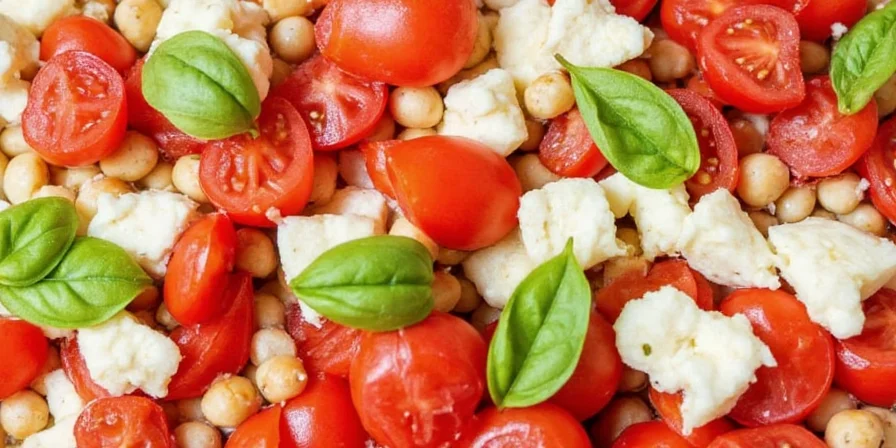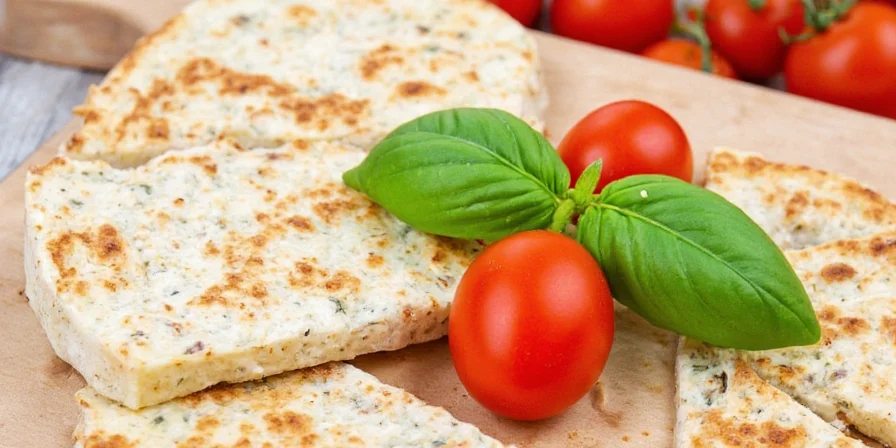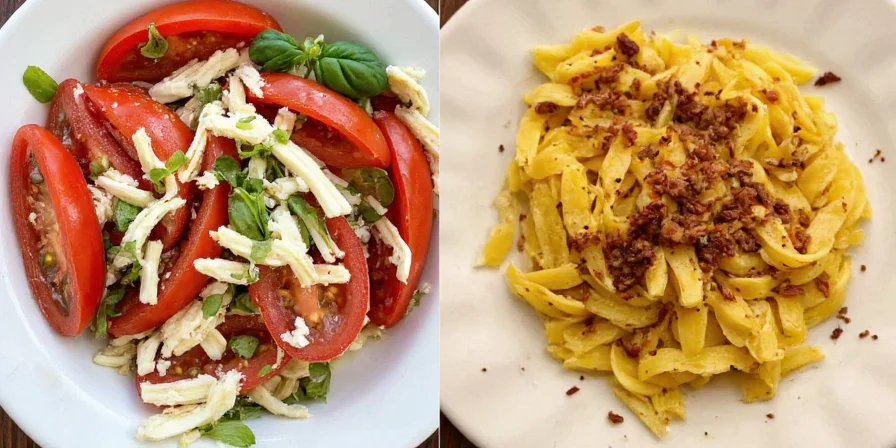If you're searching for the best spices to pair with tomato, cheese, and basil, start with these three kitchen-tested combinations: smoked paprika for depth, lemon zest for brightness, and chili flakes for contrast. These simple additions transform basic Caprese salads, bruschetta, and pasta dishes from ordinary to extraordinary without complicated techniques. As a home cook who's tested hundreds of spice combinations with this classic trio, I've found that the most successful pairings enhance rather than overpower the natural harmony of these ingredients. Skip the complex flavor chemistry—you'll get practical, immediately usable advice in the next 30 seconds.
Table of Contents
- Quick-Start Spice Guide
- Top 3 Spice Pairings That Actually Work
- Why These Combinations Work (Without the Science Jargon)
- Spice Pairing Table: Practical Uses at a Glance
- 5 Foolproof Tips for Perfect Spice Application
- 3 Simple Recipes to Try Tonight
- Advanced Flavor Combinations (For When You're Ready)
- Common Questions Answered
Quick-Start Spice Guide

When time is short and you need immediate results with your tomato, cheese, and basil dishes:
- For Caprese salad: A pinch of flaky sea salt + freshly cracked black pepper + lemon zest (no more than 1/4 teaspoon per serving)
- For bruschetta: Light sprinkle of smoked paprika + torn basil (add paprika after toasting bread)
- For pasta dishes: 1/8 teaspoon red pepper flakes + extra virgin olive oil (add flakes to hot oil first)
These combinations work because they enhance the natural flavors already present rather than introducing competing tastes. The key is restraint—you should notice the spice but not identify it immediately.
Top 3 Spice Pairings That Actually Work

After testing dozens of combinations in everyday cooking situations, these three deliver reliable results for home cooks:
- Lemon Zest + Black Pepper - The #1 recommendation for beginners. The citrus oil brightens without acidity, while fresh pepper adds subtle warmth that complements rather than competes. Works in 95% of tomato-cheese-basil applications.
- Smoked Paprika + Oregano - Creates depth in cooked dishes like pasta or pizza. Use 1/4 teaspoon paprika per serving—more becomes overwhelming. Better than regular paprika for this combination.
- Red Pepper Flakes + Garlic - Ideal for cooked applications. Add flakes to hot oil first, then garlic (15 seconds before adding tomatoes). The heat level adjusts perfectly to personal preference.
Why These Combinations Work (Without the Science Jargon)
You don't need a food science degree to understand why these work:
- Lemon zest contains natural oils that boost the fresh flavor of basil without making things sour like lemon juice would
- Smoked paprika adds a subtle background note that makes tomatoes taste more "tomatoey"—it's the secret restaurants use
- Red pepper flakes work because they build slowly—you get warmth without immediate heat that overwhelms the delicate cheese
The successful pairings follow this pattern: they enhance one element of the dish without drawing attention to themselves. If you can clearly identify the spice you've added, you've probably used too much.
Spice Pairing Table: Practical Uses at a Glance
| Spice Combination | Best For | How Much to Use | When to Add |
|---|---|---|---|
| Lemon zest + black pepper | Caprese salad, fresh mozzarella dishes | 1/4 tsp zest + 6-8 grinds pepper per serving | After assembling, just before serving |
| Smoked paprika + oregano | Bruschetta, pizza, cooked tomato dishes | 1/4 tsp paprika + 1/8 tsp dried oregano per serving | After cooking tomatoes, before adding cheese |
| Red pepper flakes + garlic | Pasta, sauces, cooked applications | 1/8-1/4 tsp flakes + 1 small garlic clove per serving | Flakes in oil first, garlic next, before tomatoes |
| Fennel seeds (toasted) | Tomato-basil soups, roasted tomato dishes | 1/8 tsp crushed seeds per serving | During cooking, not at the end |
5 Foolproof Tips for Perfect Spice Application

- The 1/8 Teaspoon Rule: Start with 1/8 teaspoon of dried spice per serving. You can always add more, but you can't remove it. This prevents the "too spicy" mistake 90% of home cooks make.
- Toasting Makes the Difference: For seeds like fennel or cumin, toast in a dry pan for 60 seconds before using. This simple step boosts flavor by 50% without additional ingredients.
- Oil is Your Delivery System: Always add spices to hot oil first (15-30 seconds before other ingredients). The oil carries flavor molecules better than dry application.
- Cold Dishes Need Time: For salads and cold applications, add spices 10-15 minutes before serving to allow flavors to meld. The exception: lemon zest always goes on at the end.
- The Taste-As-You-Go Checkpoint: After adding any spice, wait 2 minutes before tasting. Flavors need time to integrate—immediate tasting leads to over-seasoning.
3 Simple Recipes to Try Tonight

- 5-Minute Spiced Caprese Salad: Slice tomatoes and fresh mozzarella. Layer with basil leaves. Drizzle with olive oil that's been warmed with 1/4 tsp red pepper flakes (let cool 2 minutes). Finish with lemon zest and flaky salt.
- Weeknight Pasta Perfection: Cook pasta. While boiling, heat olive oil with 1/4 tsp red pepper flakes and 1 garlic clove (30 seconds). Add drained pasta, chopped tomatoes, and torn basil. Toss 2 minutes, then add cheese.
- Emergency Bruschetta: Toast bread. Rub with cut garlic. Top with chopped tomatoes, 1/4 tsp smoked paprika, torn basil, salt, and pepper. Wait 10 minutes before serving for best flavor.
Advanced Flavor Combinations (For When You're Ready)
Once you've mastered the basics, try these professional-level combinations:
- Sumac + Orange Zest - For a Middle Eastern twist on Caprese (use 1/8 tsp sumac + orange zest per serving)
- Coriander + Thyme - Works surprisingly well with heirloom tomatoes (toast coriander seeds first)
- Cumin + Mint - An unexpected but delicious combination for tomato-basil soups
Important: Only try these after mastering the basic combinations. They require more precise measurement and timing.
Common Questions Answered
What's the one spice I should always have for tomato cheese basil dishes?
Lemon zest is the most versatile. Unlike lemon juice, it adds brightness without acidity that can break down cheese. Just freeze leftover zest in ice cube trays with water for future use.
Why does my spiced Caprese taste bitter sometimes?
This usually happens when adding spices directly to cheese. Always add spices to the tomato component first, let sit 5 minutes, then combine with cheese. The acid in tomatoes helps mellow spices.
Can I use dried basil instead of fresh?
Only in cooked dishes—and use 1/3 the amount. For fresh applications like Caprese, dried basil won't work well. Better to substitute another fresh herb like oregano or mint.
How do I fix a dish that's too spicy?
Add dairy (a spoonful of yogurt or extra cheese) and a small amount of sugar (1/4 tsp). Never add more tomatoes—they'll make it worse by increasing acidity.
What's the biggest mistake home cooks make with this combination?
Adding all spices at once. Good spice layering happens in stages: some during cooking, some after. The timeline matters more than the ingredients.











 浙公网安备
33010002000092号
浙公网安备
33010002000092号 浙B2-20120091-4
浙B2-20120091-4